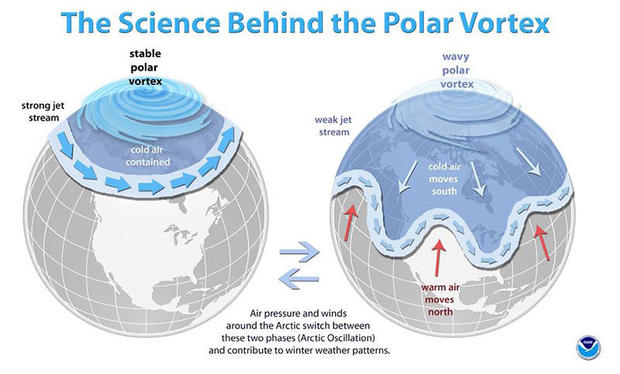POLAR VORTEX

Why in news?
A record-breaking cold wave has swept through the US Midwest, with 22 states hitting sub-zero temperatures.
What is the condition at present?
- Among cities, Chicago dropped to a low of -30°C, slightly above the city’s lowest-ever reading of -32°C from 1985.
- Minneapolis recorded -32°C.
- The extreme cold has been caused by a blast of Arctic air, which in turn is a result of what is known as a “polar vortex” event.
What is a polar vortex?
- The polar vortex is a large area of low pressure and cold air surrounding both of the Earth’s poles.
- The system has a whirling mass of cold air circulating in the mid- to upper-levels of the atmosphere, flowing counter-clockwise.
- This flow of air helps in containing the colder air within the poles.
What is a "polar vortex" event?
- Normally, when the vortex is strong and healthy, it helps keep a current of air (the jet stream) travelling around the globe in almost a circular path.
- This current contains the cold air north of it and the warm air south of it.
- But in winter, in the northern hemisphere, the polar vortex sometimes becomes less stable and expands.
- This occurs when there is a lack of a strong low-pressure system, resulting in jet stream losing the hold to keep it in line, and becoming wavy.
- So a wave of cold air will be pushed down south.
- This is called a polar vortex event, defining the “breaking off” of a part of the vortex.

Where does it happen?
- A polar vortex event is not confined to the US.
- Portions of Europe and Asia also experience cold surges connected to the polar vortex.
- The risk lies in the magnitude of how cold temperatures will get when the polar vortex expands, sending Arctic air southward into areas that are not usually that cold.
SUMMARY





No comments:
Post a Comment